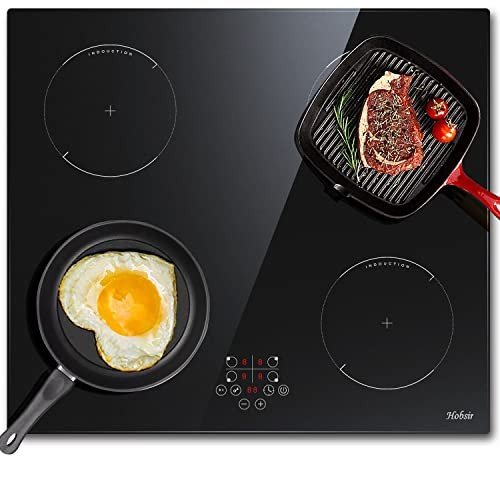Understanding Hobs and Ovens: The Essential Kitchen Appliances
In the world of kitchen appliances, couple of items are as vital as hobs and ovens. These appliances form the foundation of cooking activities, making it possible for individuals to create whatever from easy meals to elaborate feasts. Understanding the distinctions, types, and performances of hobs and ovens can substantially enhance one's cooking experience. This post explores the intricacies of hobs and ovens, providing insights that deal with both beginner and skilled cooks.
What Is a Hob?
A hob, frequently described as a cooktop or range top, is the flat surface on which pots and pans are put for cooking. Hobs are equipped with heating aspects that generate the required heat for cooking food. They come in numerous kinds, consisting of gas, electric, induction, and ceramic options. Each type offers distinct benefits and disadvantages.
Kinds of Hobs
Gas Hobs:
- Heat Source: Natural gas or gas.
- Benefits: Instant heat control and responsiveness, preferred by many chefs for accurate cooking.
- Disadvantages: Requires a gas connection and can be less energy-efficient.
Electric Hobs:
- Heat Source: Electric coils or smooth glass-ceramic surfaces.
- Advantages: Generally simpler to clean up, even heating, and extensively readily available.
- Downsides: Slower to warm up and cool off compared to gas.
Induction Hobs:
- Heat Source: Electromagnetic currents.
- Benefits: Quick heating, energy-efficient, and only heats up the pots and pans, not the surrounding surface area.
- Disadvantages: Requires compatible pots and pans (ferrous products).
Ceramic Hobs:
- Heat Source: Electric and has a smooth glass surface area.
- Benefits: Sleek appearance, easy to tidy, and even heating.
- Drawbacks: Can take longer to warm up and cool off.
What Is an Oven?
An oven is an enclosed device that cooks food by surrounding it with dry heat. Ovens can be standalone systems or combined with hobs in a single device referred to as a variety. Ovens are versatile tools that can be used for baking, roasting, broiling, and more.
Types of Ovens
Conventional Ovens:
- Heat Source: Electric or gas.
- Advantages: Good for standard baking and roasting.
- Downsides: Can have irregular heat distribution.
Convection Ovens:
- Heat Source: Electric or gas with a fan for circulating air.
- Benefits: More even cooking and quicker cooking times due to airflow.
- Disadvantages: Can be pricier and might require adjustments in cooking times.
Microwave Ovens:
- Heat Source: Microwaves.
- Advantages: Quick cooking and reheating; terrific for thawing.
- Downsides: Can not brown or crisp food well.
Steam Ovens:
- Heat Source: Steam generation.
- Advantages: Retains nutrients and wetness in food, much healthier cooking choice.
- Drawbacks: Longer cooking times and typically higher expense.
Key Differences Between Hobs and Ovens
While hobs and ovens serve the main function of cooking food, their performances and uses differ considerably. The following table sums up these crucial distinctions:
| Feature | Hob | Oven |
|---|---|---|
| Cooking Method | Direct heat | Enclosed heat |
| Main Use | Boiling, sautéing, frying | Baking, roasting |
| Heat Source | Gas, electric, induction | Gas, electric, steam |
| Cooking Area | Flat surface area | Enclosed space |
| Cooking Time | Typically quicker | Differs based upon meal |
| Control & & Precision | Immediate and direct | Depend on settings and timers |
Benefits of Using Hobs and Ovens Together
Integrating using a hob and an oven can considerably boost the cooking process. Here are some benefits:
- Versatility: Different types of food can be cooked concurrently.
- Performance: Using both enables numerous cooking techniques, such as searing on the hob and baking in the oven.
- Time-Saving: Multi-tasking can significantly lower general cooking time.
Upkeep and Care
To make sure the durability of hobs and ovens, routine upkeep is important. Here are some tips:
For Hobs:
- Clean spills right away to prevent staining.
- Usage suitable cleaners for particular products (e.g., ceramic cleaner for glass-ceramic hobs).
- Frequently check gas connections for leakages (for gas hobs).
For Ovens:
- Wipe down the interior after each usage to prevent build-up.
- Usage self-cleaning functions if available, or apply oven cleaners for tough stains.
- Routinely examine seals and gaskets for wear and tear (to preserve heat effectiveness).
FAQs About Hobs and Ovens
1. What is the best type of hob for a newbie cook?
Response: A ceramic or electric hob is typically suggested for newbies due to relieve of use and cleaning.
2. Can I use any cookware on an induction hob?
Answer: No, induction hobs require cookware made from magnetic materials (e.g., cast iron or stainless-steel).
3. How typically should Oven And Hobs For Sale clean my oven?
Response: It is a good idea to clean your oven every few months, or more regularly if you utilize it frequently.
4. Is Hobs Sale to bake in a stove?
Answer: Yes, convection ovens are often better for baking as they offer even heat distribution. However, some delicate dishes may gain from standard ovens.
Understanding the functionality and differences in between hobs and ovens is vital for any cooking enthusiast. Whether one chooses the instant heat of a gas hob or the accuracy of an induction cooktop, each type offers distinct advantages. Likewise, ovens vary commonly in function, from conventional baking to steam cooking. By valuing these appliances' functions in food preparation, cooks can boost their culinary abilities and simplify their kitchen activities.

